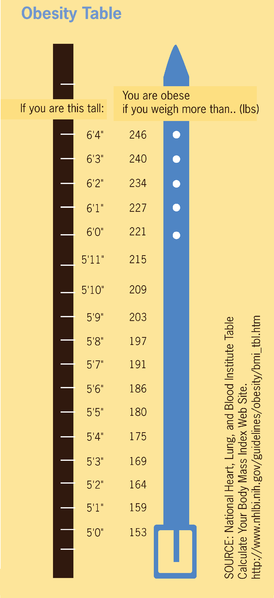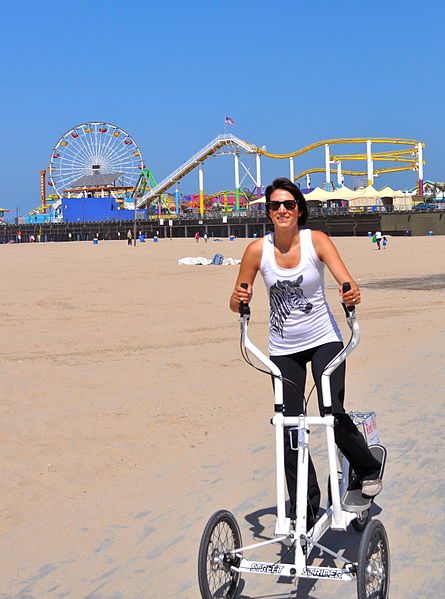
Calculate your body mass index via the National Heart, Lung and Blood Institute
Life Insurance Height and Weight Chart
Best life insurance companies for being overweight

Calculate your body mass index via the National Heart, Lung and Blood Institute
Life Insurance Height and Weight Chart
Best life insurance companies for being overweight

30 minutes of exercise a day. 16 hours a day awake. 1/2 hour a day of vigorous exercise for health and longevity.
The American Heart Association guidelines are 30 minutes a day of exercise 5 days a week. John Hancock’s HealthStyles Program credits regular exercise, along with other factors, for better life insurance rates. This can be helpful if a parent died from heart disease or cancer prior to age 60 to allow their super preferred rate and in many other situations to improve health rate classification and save lots of money.
Annual check-ups and regular screening test are part of John Hancock’s program. Annual blood tests identify health problems, and the earlier a problem is identified the better. I wish I had done this for my children over the last year. My 12 year old son was diagnosed with type 1 diabetes this month, and the months before his diagnosis were progressively harder on him physically and psychologically. Nothing would have changed the diagnosis, but a routine annual physical sometime last year may have spared him that ordeal which was occurring right before our eyes but unidentified.

Most permanent life insurance plans are coverage to age 121. Genworth’s “GenGuard UL” , an excellent plan, longest fixed rate is to 109, then tiers to a higher rate to age 121.
Since I quote that Genworth plan frequently, I’ve often wondered about the odds of make it past age 109. The Gerontology Research Group currently lists 75 people in the world who are age 110 and older.
Recently a member of this group, Federica Sagor Maas, an early Hollywood script writer, passed away at age 111. For those interested in photography of that era, Shorpy has early 20th century images which enlarge to allow many details and scenes to come back into full view.
.
Mutual of Omaha uses Dial-A-Guarantee to market their universal life insurance (UL). It’s an apt phrase. You can dial in coverage UL for any age: 90, 95, 100, or whatever to save money. Many carriers offer 30 year term up to age 65, so you can dial in less expensive term to age 95. How long you dial-in coverage is debatable. It’s tough to make it to 100. Then again, recently Fred Buckles, the last U.S. First World War veteran, died at 110. Genworth Life and Annuity’s UL fixed rate maximum is age 110, but has a catch up provision to extend it to age 121. If you do decide to dial-a-guarantee, make sure the coverage has a catch up provision. Stay away from universal life that covers to age 100 and stops. It’s just not necessary when age 120 coverage is not much more. Age 120 UL rates are so good that dial-a-guarantee is generally not worth it. But then again since Genworth’s Term UL has such great rates and a versatile UL extension, you have to take a close look at your options.
The Boston Globe ran an obituary on Samuel Klauber yesterday, who died at age 101. Certain clues to his longevity were his resourcefulness and having an adventurous life. He ate peanuts stuffed in his pockets when he couldn’t get a meal when travelling. Sounds like a low calorie diet person to me. Dr. Klauber would treat poorer patients and, if need be, not charge them a traditional fee. Good deeds are a measure of success as well as long life.
The Globe gave vascular dementia as one cause of his death. I had to look that up. This form of dementia is usually the result of stoke or a series of strokes. The Globe ran a photo of what I presume to be Dr. Sam Klaber’s 519 Medical Detachment in a landing boat, either practicing or taking part in the D Day invasion during World War II. Some are smiling, so perhaps it was practice. Their helmets had a semi circular stripe in the front. I presume the stripe identified them as medical personnel to others. I hadn’t seen images of those stripes before.
Jane Brody in the New York Times published an article yesterday on centarians. According to the census bureau, the number of centenarians in the US has increased to 96,548 in 2009 from 38,300 in 1990. “…only about 20 to 30 percent of longevity is genetically determined. Lifestyle seems to be the more dominant factor.” “….three critical attributes that might be dubbed longevity’s version of the three R’s: resolution, resourcefulness and resilience.” (bold added)
That seems good advice for whatever age you are, especially in the Great Recession.
Now what does that mean in regards to life insurance? In the old days, a centenarian’s life insurance policy was whole life insurance, and turning 100 the policy would be worth at least its face amount in cash. “Happy 100! Here’s a check for your original $100,000 policy, plus dividends, for a grand total of $264,823.56.”
Today you’re probably going to meet whole life’s more willful step-daughter universal life (UL), because whole life is too expensive for most mortals. With a guaranteed UL you can set the age guarantee to whatever you want: age 100, age 105, age 110, up to age 121. The tricky part of a guaranteed UL is that living beyond the age rate guarantee, baring extension provisions, leaves the policy with zero value. Aye, a willful and heartless step-daughter she may be. Better check with an agent’s proposed age guarantee because the agent may devise an earlier age just to make it cheaper. Get involved in this age limit decision based on your lifestyle and genes. Keep in mind you may make it past 100 and, according to Wikipedia, the human longevity age record is 122: Jeanne Calment (1875-1997). The likes of her we rarely see. Undisputed second place is 114.
I recommend you set the UL age guarantee to age 121. “Happy 100! No, problem! I’d have to close in on the world’s record to outlive my life insurance policy.” This way you have peace of mind as resolute, resourceful and resilient, you live past 100.